A look at the many film versions of Sarat Chandra Chatterji’s celebrated novel that he wrote at the age of 19, to have hit the screen from way back in 1928.Indian cinema has been going places in the new millennium. Lagaan went West to run in the Oscar race. And now, another Hindi film, Devdas with Shah Rukh Khan in the title role, was screened at the recent Cannes Film  Festival. Festival.
Devdas is perhaps the best known work of the celebrated Bengali writer, Sarat Chandra Chatterji. Written in 1917, it has had an immense impact not only on Indian cinema but also the psyche of the love-lost Indian male! Sarat Chandra Chatterji (1876-1938) came from a poor, Bengali, Brahmin family and while working in Burma for a living, began to write. Back in Kolkata he became extremely popular and, at one time, was the highest paid writer in Bengal. Even Nobel Laureate, Rabindranath Tagore praised him saying that his writing had captured Bengali readers like no other writers’ work had. Many of his novels have been filmed like Parineeta, Swami and Biraj Bahu. But the most successful of them, which has attained cult status in more than one language, is Devdas (in the South Indian language versions, the film was always spelt as Devadas). The story revolves around a feudal landowner’s son, Devdas who falls in love with a poor girl who goes to school with him, Parvati (Paro). Due to differences in class, the weak-willed, indecisive youth is unable to marry his childhood sweetheart who is married off to a rich, old zamindar instead. Devdas cannot forget her and tries to drown his sorrows in the bottle. A golden-hearted prostitute, Chandramukhi befriends him. But he runs away from her comforting bosom to meet Paro, dying heart-broken in front of her house. The novel was a bestseller and translated into many Indian languages. The noted Telugu writer-translator-and-later-successful-film producer, Chakrapani (A V Subba Rao) of Nagi Reddi- Chakrapani wrote the Telugu version. Some critics felt that his work was better than the original! The film medium’s "obsession" with the novel began in 1928 when the first film version was made at Kolkata by Naresh Mitra who also played a major role in this silent movie. The film’s cinematographer was Nitin Bose, 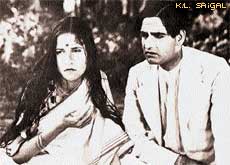 later a well-known filmmaker of hits like Deedar, Kathputli and Gunga Jumna. later a well-known filmmaker of hits like Deedar, Kathputli and Gunga Jumna.
The first ‘talkie’ version of Devdas was released in 1935. The celebrated film company of yester-decades, New Theatres, produced it in Bengali and Hindi. PC Barua, directed both language versions. Promatesh Chandra Barua (1903-1951), the son of the Maharaja of Gauripur in Assam, had a lively interest in the arts. He also dabbled in provincial politics for a while and was a member of the Assam Legislative Assembly. He moved to Kolkata where he was closely associated with the great patriot and leader, ‘Desabandhu’ Chittaranjan Das. Interested in cinema, he went to Europe and underwent training in filmmaking. Back home, he worked with the Indian film pioneer Dhiren Ganguli (DG) for a while and then formed his own company. He produced a couple of films without much success. Winding up the show he joined New Theatres. Here he took up the popular Sarat Chandra novel for filming and in the Bengali version played Devdas himself. Paro was played by Jamuna, an unknown chorus girl whom Barua discovered and later married. Rajkumari played Chandramukhi. The singing icon of Indian cinema, Kundan Lal Saigal was the harmonium-playing singer at the dancing girl’s kotha in the film. Saigal was the hero in the Hindi version. This Devdas had many plus points. The brilliant technique used in the on-screen narration by Barua and his highly talented cameraman, Bimal Roy really impressed. Earlier, Indian talkies were mostly photographed plays or canned theatre. The camera was usually static. Actors walked in and walked out right or left of the frame 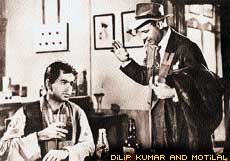 like in theatre. Barua and Roy changed all that. They introduced parallel cutting to show two events at the same time and enhance the emotional impact as well as increase suspense and tension. In the famous sequence in which Devdas travels to meet Paro, Barua intercut train shots with Paro at home, telescoping distance and time. This was the first time such a technique of cinematic narration was used in India and it became justly famous. like in theatre. Barua and Roy changed all that. They introduced parallel cutting to show two events at the same time and enhance the emotional impact as well as increase suspense and tension. In the famous sequence in which Devdas travels to meet Paro, Barua intercut train shots with Paro at home, telescoping distance and time. This was the first time such a technique of cinematic narration was used in India and it became justly famous.
In cinema in general, shots of running trains are not only visually beautiful but also have a fascination of their own. Directors like John Ford have used the train as a film metaphor of change and hope. Barua who trained in Europe, especially Germany, made good use of his knowledge to create new trends in Indian cinema. Another element, which contributed in large measure to the success of the film, was the music by Timir Baran. KL Saigal as the singer in Chandramukhi’s kotha sang two songs in Bengali, a language he was not familiar with them. They became big hits. Both the language versions were blockbusters and as film historian and archivist, Firoze Rangoonwalla described it, "New Theatres, Saigal and Barua were to attain immortality with a film called Devdas". Later, the famous Tamil writer, Kalki (Ra. Krishnamurthi) wrote this about Saigal, "There may be 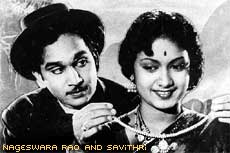 places in India where the wind cannot reach but there is no place where Saigal’s songs do not enter!" places in India where the wind cannot reach but there is no place where Saigal’s songs do not enter!"
This classic Bengali film was lost for many years but recently a print was found in Bangladesh. Not many are aware that New Theatres made a Tamil version of Devdas in 1936 directed by PV Rao who also played Devdas. Rao, a disciple of the forgotten pioneer, R. Prakash, was an active filmmaker during the silent era and in the early ’30s directed many Tamil films in Kolkata and Pune. Sadly, lack of discipline, addiction to the common vices generally associated with the movies and more led to his decline into obscurity. However, PV Rao has earned a place in the history of South Indian cinema as the director of Marthanda Varma (1932), the only surviving South Indian silent film, oddly described by many as ‘the Malayalam Silent Film’! The only print of this historic film is preserved at the National Film Archive of India, Pune, thanks to the relentless and painstaking efforts undertaken by its former director, PK Nair. Saigal played the role of a singer in Chandramukhi’s kotha and sang two songs in the Tamil version of Devdas too. His pronunciation of some of the words in one song is not only amusing but also positively obscene! A forgotten actress, GB Rajayee played Paro. After a couple of films she faded away and was never heard of again. (Interestingly the original name of the sizzling South Indian movie star of Chandralekha fame, TR 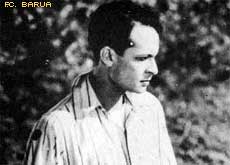 Rajakumari was Rajayee! She changed her name to Rajakumari, and became the first ‘Dream Girl’ of South Indian cinema with her first release, Kachadevayani--it was actually her third film.) Rajakumari was Rajayee! She changed her name to Rajakumari, and became the first ‘Dream Girl’ of South Indian cinema with her first release, Kachadevayani--it was actually her third film.)
1953 witnessed the filming of Sarat Chandra’s novel in Tamil and Telugu by the ‘Kuchipudi’ dancer-choreographer-turned-filmmaker, Vedantham Raghavaiah (1919-1971) with superstar Akkineni Nageswara Rao playing Devadas (‘Devadasu’ in Telugu) in both versions. That brilliant actress and multi-lingual star, K Savithri was Paro while dancer-actress Lalitha played Chandramukhi. Both versions were major hits thanks to three factors. Excellent performances by Nageswara Rao and Savithri. Melodious music by CR Subbaraman (1921-1952). A successful composer who set new trends in film music, introducing the lilt and melody of Latin American music, Subbaraman created many hits. He died when he was barely 30 during the making of this Devdas. His brilliant assistant, MS Viswanathan, then part of duo, ‘Viswanathan-Ramamurthy’, took over and completed the remaining work. One of the songs composed by ‘MSV’ was the haunting melody still fondly remembered and sung after half a century ‘Ulagey mayam...’ (Tamil) and ‘Jagamey maya...’(Telugu). The noted film music composer and singer, Ghantasala Venkateswara Rao, sang both songs. Nageswara Rao told his pals later that the director shot all his scenes only at nights, keeping him 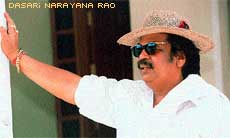 awake to get the drunken, droopy look. awake to get the drunken, droopy look.
Bimal Roy who made the grade as a top Indian filmmaker of significant films like Do Bigha Zameen, paid his homage to Devdas (1955), dedicating the film to his mentor Barua, with Dilip Kumar as Devdas, Suchitra Sen as Paro and Vyjayanthimala Chandramukhi. However, in spite of Bimal Roy and top stars, the film did not live up to expectations. The multi-lingual star and filmmaker, Vijayanirmala made a Telugu version of Devdas in 1974 with her star-husband Krishna playing the title role. She was Paro and the buxom, multi-lingual star, Jayanthi played Chandramukhi. The film had excellent music (Ramesh Naidu) but it did not do as well as expected. Interestingly, when the film was released the 1953, Devadasu was also released in competition and it attracted large crowds! The prominent filmmaker, Dasari Narayana Rao made Devadasu Malli Puttadu! (Telugu, 1978) in which Devadas is born again while Paro is still alive but old! In Tamil came another rehash of the tale, Vaazhvey Maayam (1982) with Kamal Hassan as the hero and Sridevi and Sripriya playing the sweetheart and golden-hearted entertainer respectively. A Malayalam version of Devadas came out in 1978, directed by Cross-Belt Mani. The popular 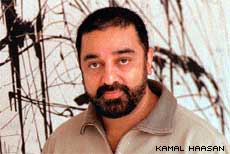 character actor Venu Nagavalli played the love-lorn lover. character actor Venu Nagavalli played the love-lorn lover.
Attempts were made to film the novel in Kannada. A producer approached the icon of Kannada cinema, superstar and cult figure, Rajkumar to play Devadas but he refused because scenes of smoking and drinking would go against his high-flying purist image in Karnataka. Another producer, a doctor by profession, worked on the project with himself as the hero. He was planning to make the film in Kannada, Tamil and Telugu but it never took off. The well-known Kannada film personality and producer MS Nayak planned to make it in more than one language with his star-daughter Chandrakala playing Paro. The noted film and dance critic, VAK Ranga Rao suggested to Nayak that Chandrakala should play both Paro and Chandramukhi. He gave the interesting reason that Devdas was drawn to Chandramukhi because he saw his childhood sweetheart in this professional entertainer. However, the project was shelved. The story, theme and ‘Devdas syndrome’ has not only made a major impact on Hindi and other language cinema but also on the makers and stars themselves. Barua himself became the victim of the bottle and many critics felt that he was recreating his own life on screen as Devadas. Even Saigal became addicted to alcohol and in his later days insisted on taking a drink before recording a song! It is also said that the novelist himself, Sarat Chandra 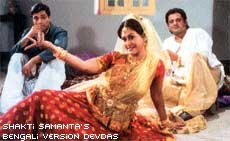 drank himself to an early death. drank himself to an early death.
Devdas was at the core of several Hindi films like Phir Subah Hogi! Amar Prem and Pyasaa among others (See Box). Many filmmakers like Guru Dutt took to the bottle due to frustration in their love life. ‘To become a Devdas’ became an idiom! Last month a Bengali Devdas hit the theatres. Made by the Mumbai based hit maker, Shakti Samanta, it has been produced, according to the producer, at a cost of Rs.5 million. Presenjit, the son of yesteryear’s star Biswajit, played Devdas. National Award winner Indrain Halder was Chandramukhi. The film hasn’t lived up to expectations. This week Sanjay Leela Bhansali’s Devdas with Shah Rukh Khan (Devdas) Aishwarya Rai (Paro), and Madhuri Dixit (Chandramukhi) and Jackie Shroff (Chunnilal) opens across the country and in theatres overseas. The film was premiered last month at Cannes. Produced by Bharat Shah at the cost of Rs 50 crore, it is the most expensive Hindi film ever made. It remains to be seen if it turns out to be another Mughal-e-Azam or Pakeezah. Interestingly, Sarat Chandra is believed to have told his friends that had he known the negative impact Devdas would have on the youth, he would never have permitted his novel to be filmed. Published in July 12, 2002 issue of Screen India |